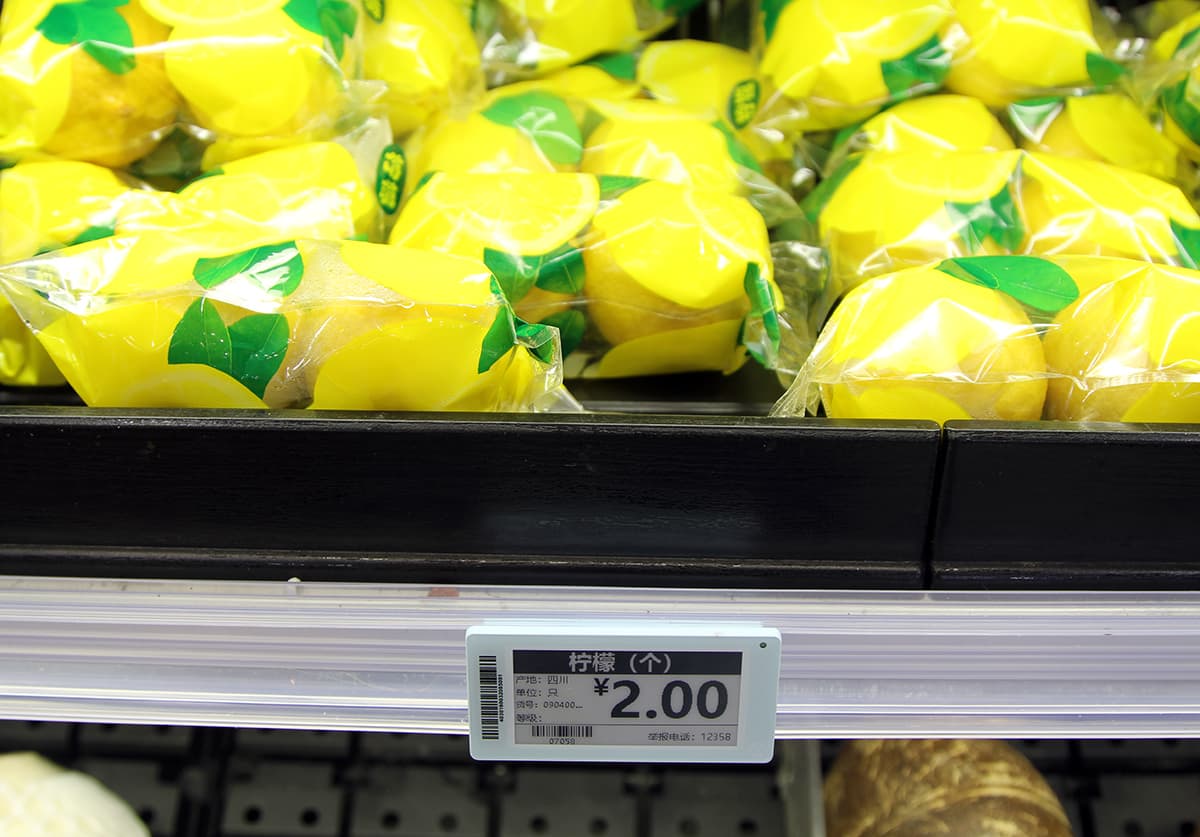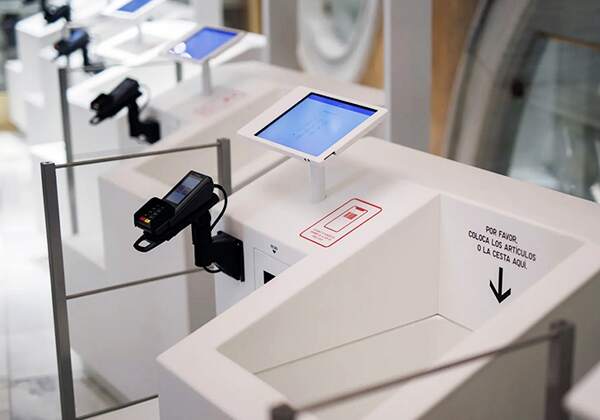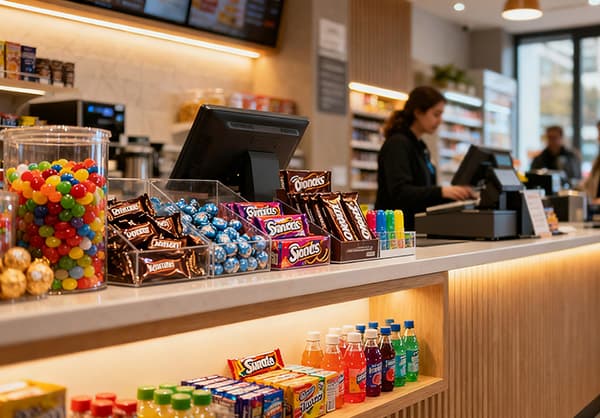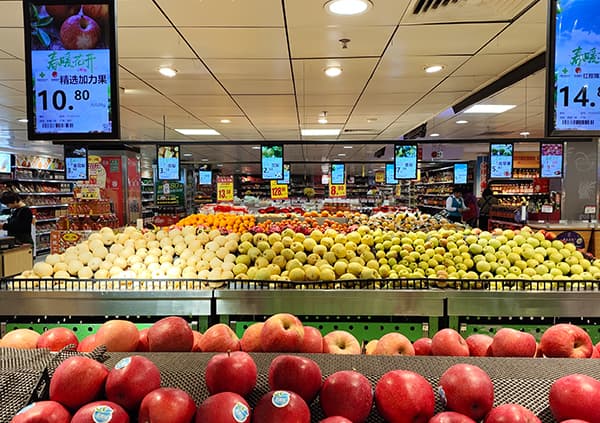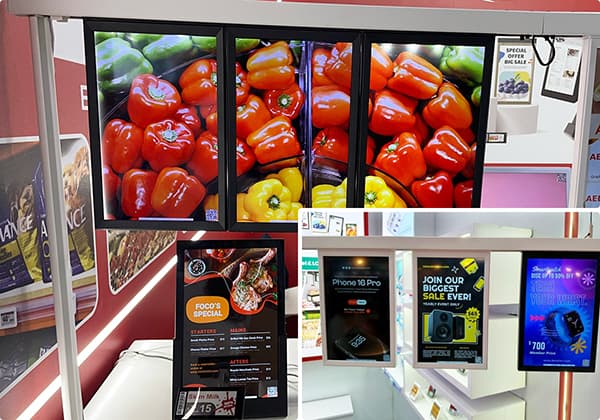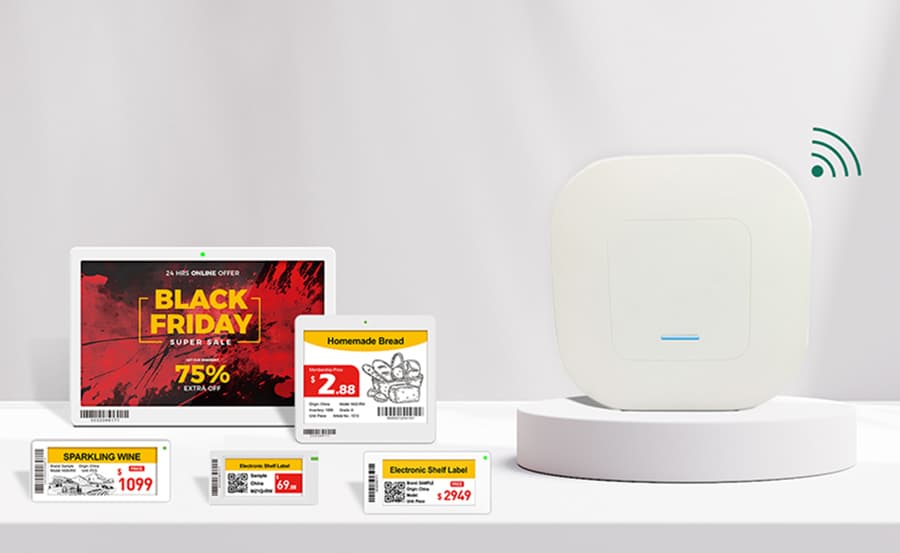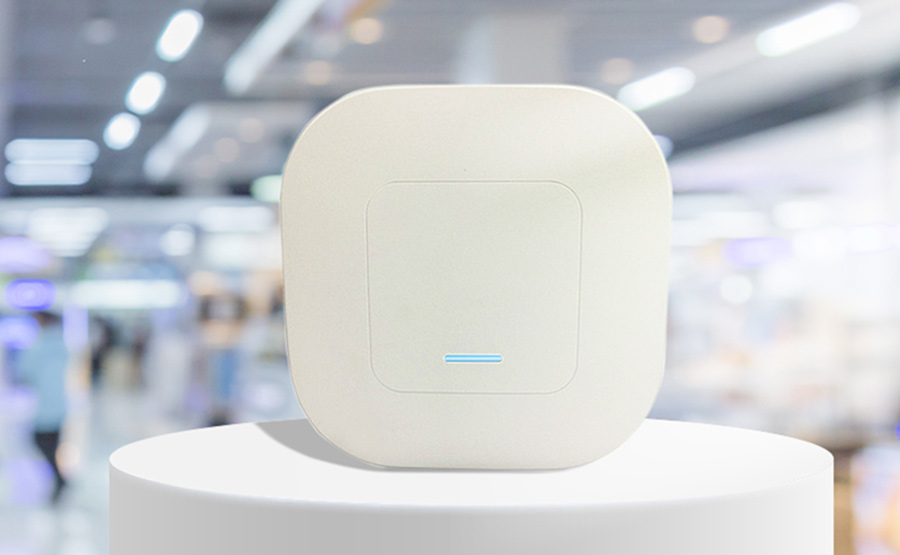Introduction
In today’s retail environment, the way consumers engage with shopping has changed fundamentally. What was once a static shelf full of printed price tags has evolved into a dynamic ecosystem where attention is fractured, margins are under pressure, and the need for meaningful engagement is high.
The concept of supermarket advertisement is no longer just about printed flyers and end-cap displays—it’s a strategic, multi-channel discipline that connects in-store visual systems like display signage and digital price displays with the broader brand and retail ecosystem.
Why Supermarket Advertisement Still Matters
Even as e-commerce grows, the physical store remains the primary battleground for retailers. The concept of supermarket advertisement — the in-store stimuli that influence purchase decisions — is still a core driver of growth. Shoppers arrive with intent, but their journey through the aisles is heavily influenced by visibility, context, and emotion. With the right visual cues, you not only boost impulse purchases but also guide customers from entry to exit, turning browsing into buying.
Moreover, in-store advertisement strategies complement online touchpoints. With omnichannel shoppers expecting consistency, integrating store messaging with web, mobile, and loyalty systems is essential. And within the store, display signage serves as the anchor for this message, and digital price displays act as the precision tool to deliver dynamic, localized offers.
Common Forms of In-Store Advertising and Their Pros & Cons
To build a modern supermarket advertisement strategy, it’s useful to map out the typical media formats and assess their strengths and weaknesses:
Printed flyers and local newspaper inserts — Widely distributed, useful for mass promotion, but slow to update and less engaging in-store.
End-cap and aisle displays — High visibility and impulse-triggering; however, they require creative refresh and physical labor.
In-store events and audio announcements — Give experiential impact but limited reach and frequency.
Display signage (digital screens within the store) — Offers real-time content, can be targeted by zone/time, and provides higher engagement, but requires upfront investment and content workflow.
Price tags for supermarket use / digital price displays (electronic shelf labels) — Allow automatic price updates, campaign flexibility, regionalization, and even integrate promotional messaging; they deliver lower long-term operational cost and higher accuracy, though initial installation and integration require planning.
Each format plays a role, but the most effective supermarket advertisement programs combine several layers so that messages reinforce each other across touchpoints.
How to Integrate Digital Signage and Electronic Shelf Labels into Your Advertising System
The real transformation happens when display signage and digital price displays are embedded into the advertising system rather than treated as point solutions. Here’s how to do it:
1. Content Layering by Zone and Time – Define tiers of content: global store-wide messages (e.g., “Weekend Bake Sale”), zone-specific triggers (e.g., “Frozen Pizza Duo Offer” at the frozen food section), and single-SKU or shelf-specific messages (via ESL) that dynamically update with stock or promotional logic.
2. Real-Time Inventory & Pricing Integration – By connecting POS, inventory management, and ESL/display signage systems, you can enforce rules such as: when a high-volume SKU crosses a threshold, automatically drop the price or trigger a display signage banner and a matching shelf label message. This ensures timely, accurate communication and reduces the risk of mismatched prices.
3. Dynamic Pricing & Promotion Execution – Use digital price displays to run “time-to-sell” campaigns: e.g., near expiry items automatically drop in price; off-peak day traffic items get special display signage promos. These systems help improve margin optimization and reduce waste—critical in fresh food supermarkets.
4. In-Store User Experience (UX) Optimisation – Placement matters: screens should be eye-level, visible in low-light or refrigerated zones, with concise messages and easy readability. ESLs must have high contrast, good refresh rate, and battery life suited to a store environment. The integration of display signage and electronic shelf labels creates a seamless visual experience — a cohesive in-store version of your broader supermarket advertisement strategy.
5. Third-Party Advertising Opportunities – A modern twist: many supermarkets now monetise their in-store network by allowing third-party advertising on display signage. For example, a supermarket may sell timed ad slots on its digital screens to local brands or suppliers. With a platform from a supplier like Datallen, the retailer can configure schedules, rotate content, and generate advertising revenue beyond simply promoting store-owned products. This adds a new dimension to supermarket advertisement—transforming store screens into a media asset and generating incremental income.
By combining these elements, you elevate your advertising from a static poster to an interactive communication network inside your store.
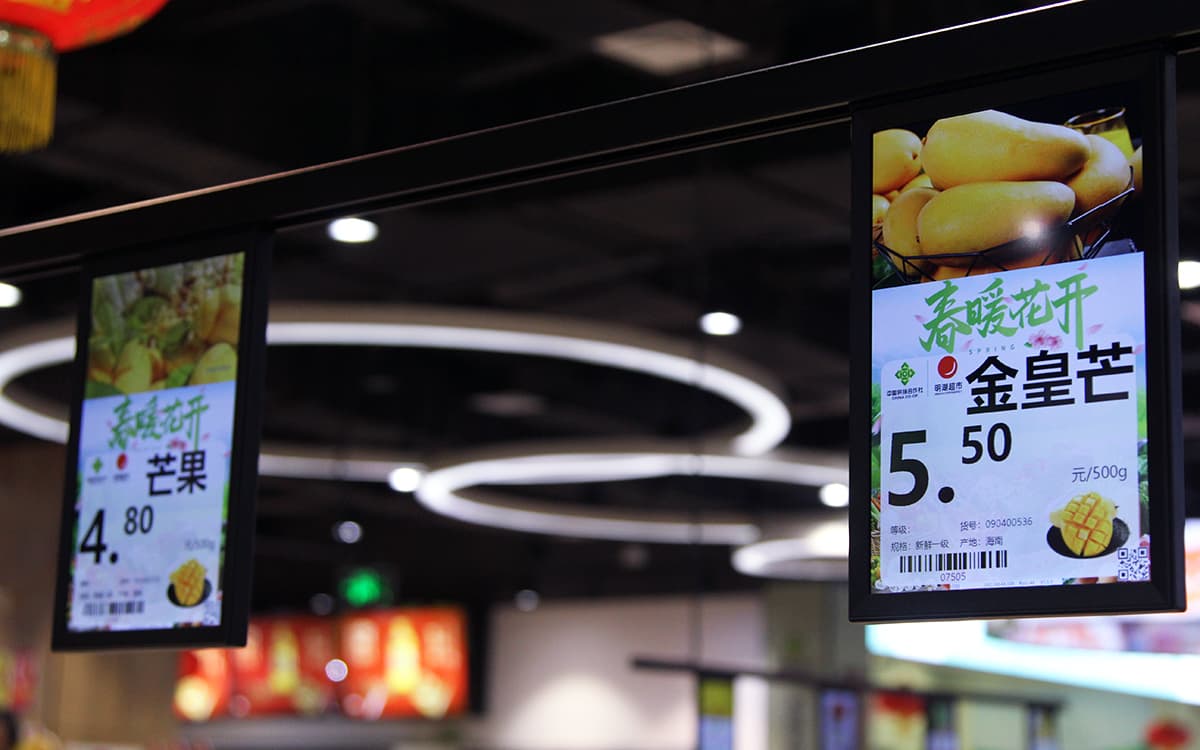
Creative Advertisement Templates for Supermarkets
Here are five high-impact templates you can implement for your supermarket advertisement strategy, each with defined steps and measuring points:
1. “Theme Week” Zone Takeover
Example: “Weekend Breakfast Special” in the bakery/fresh area.
Execution: use display signage at the entrance announcing the theme, in-aisle signage reinforcing the message, ESLs on featured SKUs updating price dynamically.
KPI: % increase in themed SKUs sold, units/week, incremental basket size.
2. Impulse Drive at Checkout & Small-Pack Promotions
Execution: display signage just before the cashier displays small-value items; ESLs highlight “today’s deal – ends in 2 h”.
KPI: uplift in items per transaction, average transaction value at checkout.
3. Cold-Chain Clearance Program
Example: Frozen foods near the best-before date.
Execution: display signage video loop in frozen aisle + ESL automatic discount triggers when inventory/age threshold reached.
KPI: reduction in waste, reduction in days-to-turn, improved margin on clearance.
4. Local Supplier Storytelling
Execution: short video signage telling the story of the local farm + ESL price highlight “locally grown – this week only”.
KPI: foot traffic in the local-product zone, conversion rate of local SKUs vs non-local.
5. Personalised Member Offers + In-Store Synchronisation
Execution: Member receives a push message before visit; once in-store display signage welcomes them by zone, and ESLs show personalised price tags (e.g., “Member Price – 10 % off”).
KPI: member vs non-member purchase differential, repeat visit frequency, incremental spend per member.
Each of these templates ties into your broader supermarket advertisement mix, reinforcing the message through multiple touchpoints and measuring impact.
Data & Measurement: How to Evaluate Your Supermarket Advertisement Efforts
A key strength of modern advertising in supermarkets is measurability. Rather than relying on intuition, you can tie in-store tactics to hard metrics:
Key performance indicators (KPIs): store footfall, new customer percentage, promotional SKU conversion rate, average transaction value (ATV), sales per square metre, and inventory turn days.
Data sources: POS for sales and transaction data; CRM/loyalty systems for customer profiling; camera heat-map analytics for traffic flows; display signage playback logs and ESL update logs.
Experimental design: Use A/B testing (for example, one weekday vs another, or one aisle with dynamic ESL vs a control aisle) to verify the impact of your supermarket advertisement interventions. Establish a baseline, define a test period, and compute statistical significance of changes.
By integrating measurement into your strategy, you ensure that your supermarket advertisement efforts are not just “nice to have” but deliver scalable results.
FAQ – Common Questions About In-Store Advertising Systems
Q1: Should we invest in digital signage or electronic shelf labels first?
A: It depends on your goals. If your priority is flexible content and media monetisation (e.g., third-party spots, large video zones), start with digital signage. If your focus is on price accuracy, dynamic pricing, and low-maintenance operations, invest in digital price displays. Ideally, these systems converge into a unified supermarket advertisement platform.
Q2: Can electronic shelf labels sync with online prices?
A: Yes. Through API integration with your pricing and product information management (PIM) system, ESLs can mirror online pricing. Be mindful of latency and stock conflicts—invest in a system that supports real-time updates and flags mismatches.
Q3: How do we measure ROI for an end-cap or digital ad zone?
A: Define a test vs control area. Track incremental sales for promoted SKUs, measure dwell time via heat-map, and compare conversion rate pre- & post-intervention. Use the uplift in units sold divided by ad cost to compute ROI.
Q4: With privacy concerns growing, how do we handle data collection in a supermarket?
A: Ensure that any tracking—heat maps, cameras, loyalty integrations—is anonymised, opt-in where required, and follows data-retention policies. Clearly state signage that analytics are in use and provide opt-out channels. This fosters trust and aligns with evolving compliance standards.
Q5: For a small/medium supermarket with a limited budget, what should we prioritise?
A: Prioritise zones with the highest traffic and conversion potential—entrance, checkout, high-margin categories. Begin with one display signage unit and a pilot ESL cluster in a high-impact aisle, measure results, then expand. The key is focusing your supermarket advertisement spend where it moves the needle.
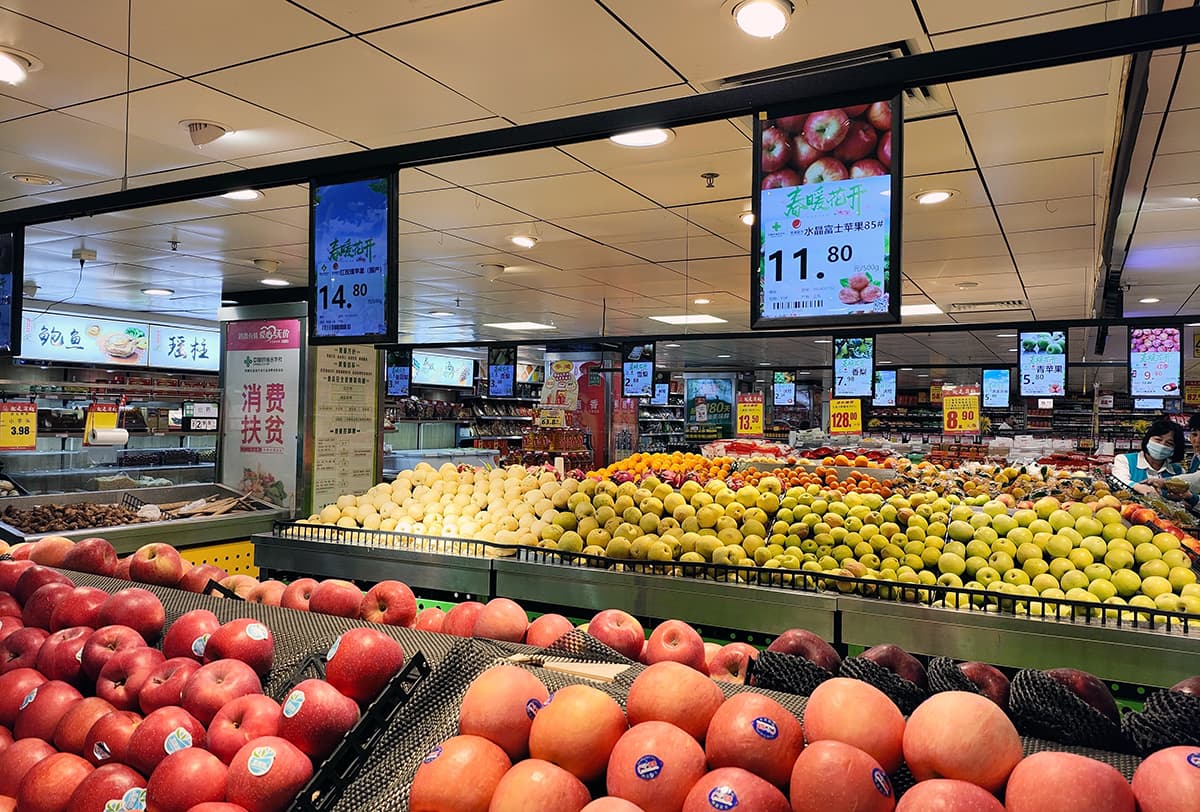
Implementation Roadmap & Budget Estimate
A phased approach smooths the implementation of your supermarket advertisement system:
Phase 1 (Pilot): Choose one zone (e.g., frozen foods or fresh produce); install one digital signage display and 20 electronic shelf labels. Set KPIs and trial for 6–8 weeks. Budget depends on manufacturer and scale, but estimate pilot hardware plus installation and content setup.
Phase 2 (Roll-out): Expand to multiple zones; integrate the system (ESL + signage) with POS/inventory; start third-party ad slot management.
Phase 3 (Optimisation): Leverage analytics, perform ongoing A/B tests, implement full store network, monetise third-party ad inventory, and refine dynamic pricing campaigns.
When selecting a supplier for price tags for supermarket use and display signage infrastructure, evaluate battery life, communication protocol, API openness, content management system (CMS) capabilities, and service reliability—including real-world cold-chain performance in frozen-food zones. A brand such as Datallen is often involved in large-scale deployments and can support customisation, though the choice should hinge on technical fit rather than brand name alone.
By following this roadmap, your supermarket advertisement program evolves from pilot to strategic asset—not just media spend, but a growth engine.
Conclusion
In today’s competitive retail space, supermarket advertisements must move beyond static signs and blanket promotions. A unified system combining digital signage, digital price displays, and third-party ad monetisation transforms your store into a dynamic media environment. With real-time data, measurable KPIs, and smart content layering, you can deliver more than discounts—you deliver relevance, engagement, and loyalty.
By embracing this modern approach, retailers create a seamless journey from seeing an advertisement to making a purchase. And when the message is consistent, timely, and contextually meaningful, in-store media becomes a driver of both operational efficiency and marketing performance.
Action Checklist & Resources
Select a pilot zone and define 3 core KPIs (e.g., units sold, inventory turn, uplift %).
Audit your current in-store media mix: what screens, flyers, and shelf tags do you have?
Connect your merchandising strategy to in-store media scheduling (digital signage + ESLs).
Set up third-party ad inventory on in-store screens for additional revenue.
Establish a data-tracking framework: ensure POV of POS data, heat maps, and display logs.
For further reading, explore industry reports on retail digital signage trends, ESL adoption in fresh-food supermarkets, and media monetisation in physical retail.
For more information, please contact us to learn more about our digital transformation solutions for supermarkets and retail stores.
For more insights, check out:
1. Unique Retail Display Ideas In Store-How Creativity and Technology Are Redefining Retail Spaces
2. Fresh Food Supermarket Grocery Success - From Display Strategies to Digital Solutions
3. Supermarket-Grocery Inventory Management: Transforming Overstock Woes into Profit Engines
4. A Guide to Implementing Commercial Digital Signage in Your Supermarket: Best Practices and Insights
5. Maximizing Efficiency with Digital Price Labels: A Comprehensive Guide for Supermarket Managers


